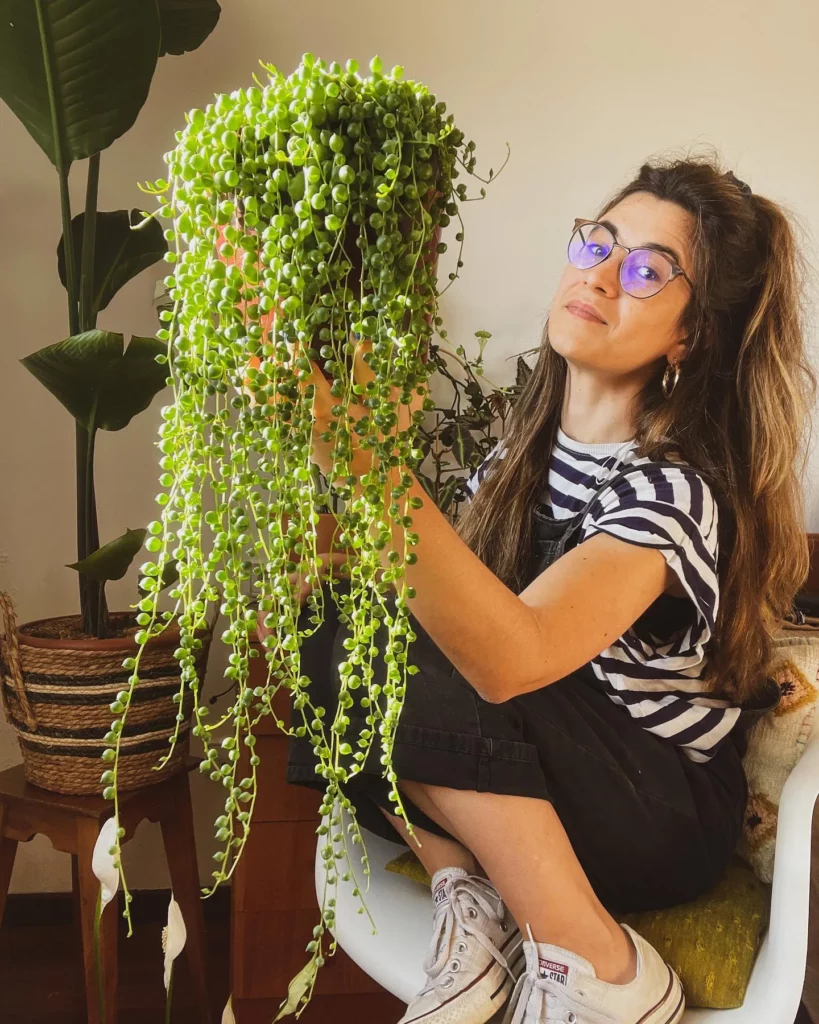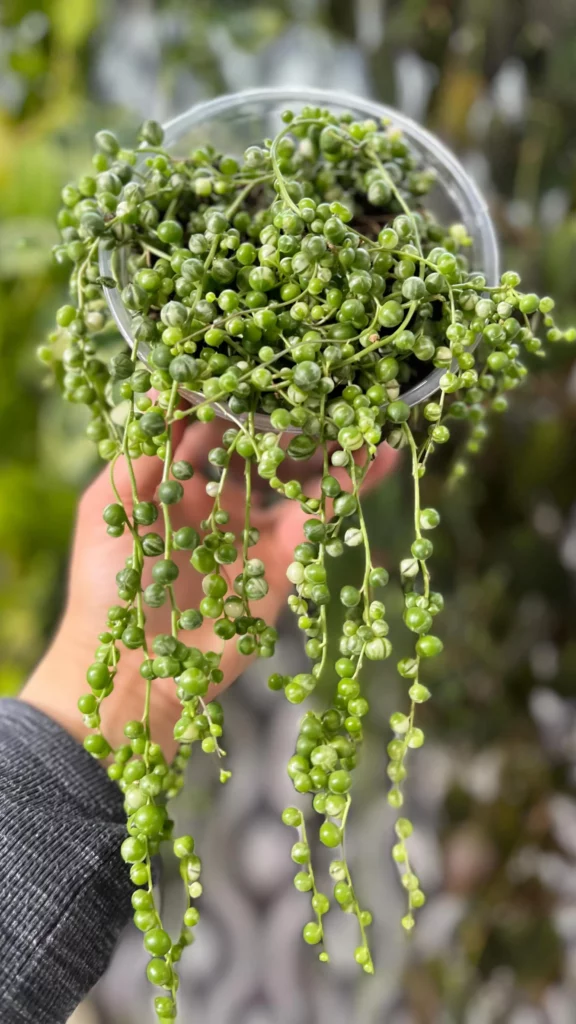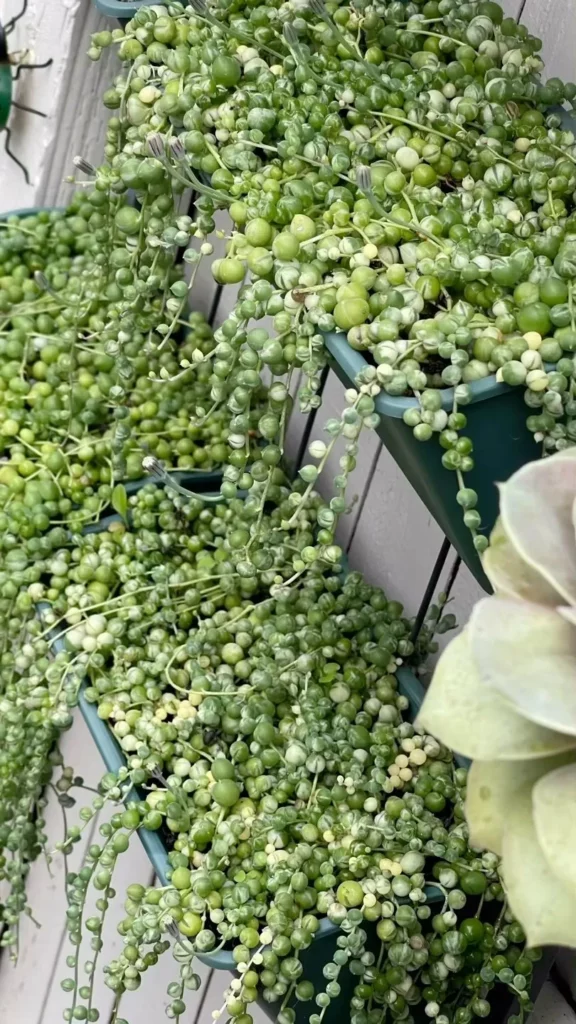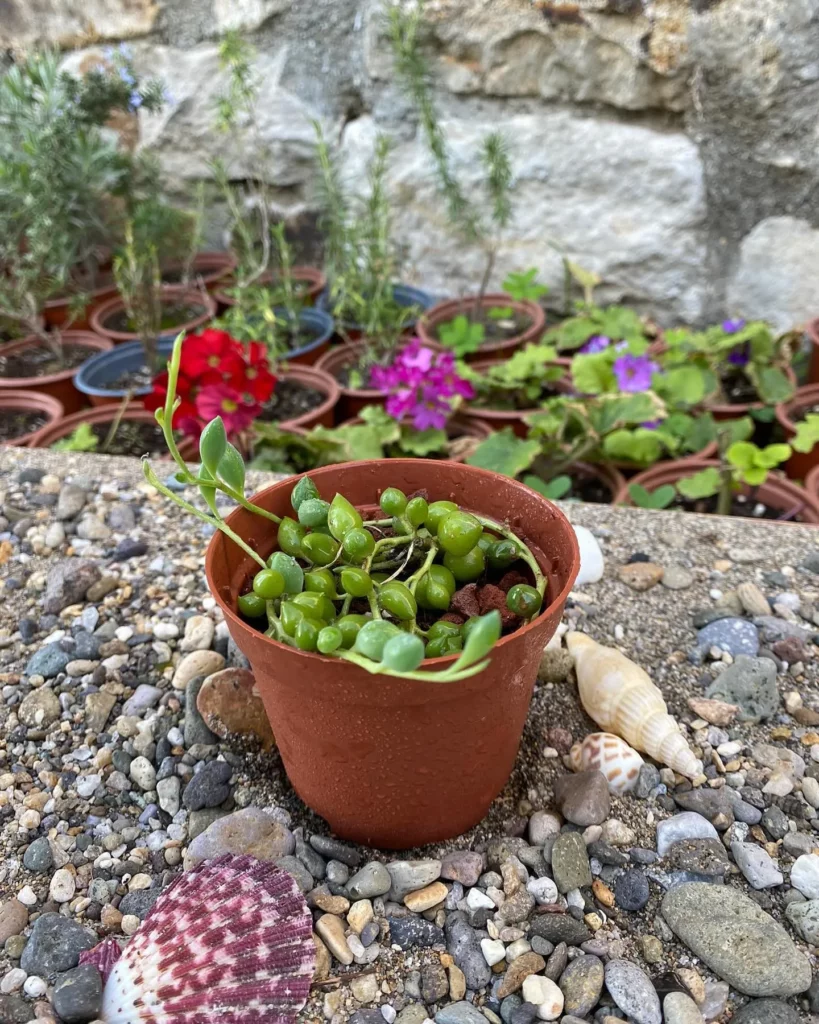Senecio plants are known for their beautiful and distinct appearance. With various species and cultivars to choose from, these plants display a range of unique characteristics.
Welcome to our comprehensive Senecio care guide! this article will provide you with expert tips and advice on how to keep your Senecio plants thriving. With their stunning appearance and easy care requirements, Senecio plants make amazing houseplants that will bring vibrant beauty to your home.
Appearance of Senecio Plants

One of the defining features of Senecio plants is their fleshy, succulent leaves. These leaves are often thick and plump, serving as a water storage mechanism for the plant. They can have a smooth or slightly wrinkled texture, depending on the specific species.
The color of Senecio leaves can vary widely, adding to their visual appeal. Most Senecio plants have vibrant green leaves that contribute to a lush, natural look. However, some species display striking silver or even purple shades, which give them an interesting and exotic appearance.
In addition to their foliage, some Senecio plants produce small, daisy-like flowers in clusters. While not all species flower, these blooms can add an extra dimension of beauty to the plant. The flowers come in a variety of colors, including yellow, white, and pink, attracting pollinators and adding a touch of color to your garden.
Whether it’s the succulent leaves, the vibrant colors, or the delicate flowers, Senecio plants are sure to catch the eye and enhance the visual appeal of any space they inhabit.
Light Requirements for Senecio Plants

Senecio plants are known to thrive in bright, indirect sunlight. To ensure optimal growth, it is recommended to provide them with at least six hours of sunlight each day. However, these plants can also tolerate some shade, making them versatile for various lighting conditions. It is important to avoid exposing Senecio plants to direct, intense sunlight as it can potentially scorch their leaves.
No products found.
If you’re placing your Senecio indoors, it is advisable to position them near a window that receives filtered light. This will provide them with the right amount of brightness without subjecting them to harsh rays. In cases where natural light is insufficient, you can supplement with artificial lighting such as fluorescent grow lights. This will help ensure that your Senecio plants receive the required light for healthy growth.
Watering Senecio Plants

Senecio plants have low to moderate watering needs. It is important to strike a balance with watering, as both overwatering and underwatering can harm the plant’s health. Follow these tips to ensure your Senecio plants receive the right amount of water:
- Allow the soil to partially dry out between waterings. Senecio plants prefer well-draining soil, so it’s crucial to avoid keeping the soil consistently wet. Check the top inch of soil with your finger – if it feels dry, it’s time to water.
- Water thoroughly when it’s time to water. Give your Senecio plant a good soak, ensuring that the excess water drains out through the drainage holes. This helps prevent water from pooling and causing waterlogged roots.
- Be mindful of the season and temperature. During the active growing season, which is typically spring and summer, Senecio plants may require more frequent watering. In contrast, reduce watering during the dormant period in winter.
- Consider the environmental conditions. Factors such as humidity, temperature, and sunlight intensity can influence the moisture needs of your Senecio plants. Adjust your watering routine accordingly to accommodate these variations.
No products found.
Signs of Proper Watering
When you provide your Senecio plants with the appropriate moisture, they will exhibit signs of healthy hydration. Look for the following indicators:
- Healthy, vibrant leaves. The foliage should be plump, firm, and free from signs of wilting or drooping.
- Moderate moisture in the soil. The soil should be evenly damp but not excessively wet. Avoid letting the soil dry out completely or become waterlogged.
- Steady growth and development. Proper watering helps promote consistent growth and encourages the overall health of your Senecio plants.
Fertilizing Senecio Plants

To ensure the healthy growth of your Senecio plants, regular fertilization during the growing season is essential. By providing the right nutrients, you can promote vibrant foliage and overall plant health. Follow these simple tips to fertilize your Senecio plants effectively:
1. Choose a Balanced, Water-Soluble Fertilizer
Select a fertilizer that is specifically formulated for succulent or cactus plants. Look for a balanced ratio of nitrogen (N), phosphorus (P), and potassium (K) such as 10-10-10 or 14-14-14. This will provide a comprehensive blend of nutrients to support the Senecio’s needs.
2. Dilute the Fertilizer
Always dilute the fertilizer to half strength before applying it to your Senecio plants. This helps prevent fertilizer burn and ensures that the plants receive the correct amount of nutrients. Follow the manufacturer’s instructions for proper dilution ratios.
3. Apply Every Four Weeks
During the active growing season, which is typically spring and summer, fertilize your Senecio plants every four weeks. This regular feeding will support continuous growth and optimum health. However, remember to avoid over-fertilization, as it can be detrimental to the plants.
4. Water the Plants Before Fertilizing
Prior to applying the diluted fertilizer, thoroughly water the soil around your Senecio plants. This step ensures that the nutrients are evenly distributed and prevents any potential root damage. Allow the soil to drain completely before proceeding with the fertilization process.
5. Avoid Fertilizing Dormant Senecio Plants
During the dormant period, which is typically fall and winter, Senecio plants require less frequent fertilization. Reduce the fertilization frequency to once every eight weeks or suspend it altogether. This allows the plants to naturally rest and prepares them for their active growing season.
Potting Senecio Plants

If you want your Senecio plants to thrive, it’s important to provide them with the right potting conditions. Senecio plants prefer well-draining soil that allows excess water to flow away easily. This helps prevent root rot and keeps the plants healthy.
Choosing the Right Potting Mix
To create the ideal potting mix for your Senecio plants, you can either use a cactus or succulent potting mix available in the market or make your own. If you decide to make your own mix, combine regular potting soil with perlite or pumice. This will ensure proper drainage and aeration for the roots.
Repotting Recommendations
It is recommended to repot your Senecio plants every one to two years. This allows the plant to have enough room for growth and prevents it from becoming rootbound. When repotting, consider moving your Senecio to a slightly larger pot if necessary.
Propagation of Senecio Plants

If you want to expand your collection of Senecio plants or share them with friends, propagation through stem cuttings is a simple and effective method. By following these steps, you can easily propagate your Senecio plants and enjoy new growth in no time:
- Start by selecting a healthy stem from your Senecio plant. Look for a stem that is about 4-6 inches long and free from any signs of damage or disease.
- Gently remove the bottom leaves from the stem, leaving the top foliage intact. These leaves can be trimmed off with clean pruning shears or pinched off by hand.
- Allow the stem cutting to dry for a few days in a cool, dry location. This drying period helps the cut end develop a callus, which helps prevent rotting.
- Prepare a well-draining potting mix for the newly propagated Senecio plant. You can use a cactus or succulent potting mix, or create your own by combining regular potting soil with perlite or pumice.
- Make a small hole in the potting mix and gently insert the stem cutting into the hole. Press the soil around the base of the stem to hold it securely in place.
- Water the newly potted stem cutting lightly, making sure not to overwater. Keep the soil slightly moist, but avoid saturating it, as excessive moisture can lead to rotting.
- Place the potted stem cutting in a warm and bright location, but avoid direct sunlight. Indirect sunlight or filtered light is ideal for root development.
- Monitor the soil moisture regularly and make sure to water whenever the top inch of soil feels dry to the touch. Be cautious not to let the soil completely dry out or become waterlogged.
- In a few weeks, you should start to see roots developing from the stem cutting. This indicates that the propagation was successful, and your new Senecio plant is beginning to establish itself.
Growth and Development of Senecio Plants

Senecio plants are known for their vigorous growth, particularly during the spring and summer months. With the right care and conditions, these plants can reach their full potential within a year or so, transforming into stunning specimens.
To encourage healthy growth, regular pruning is essential. By trimming back the stems and foliage, you can maintain a compact shape and stimulate bushier growth. This will result in a fuller and more visually appealing Senecio plant.
It’s worth noting that older Senecio plants have a tendency to become leggy, with stems stretching out and becoming long and thin. However, you can revitalize these plants by strategic pruning and propagating the healthy cuttings. This will not only rejuvenate the plant but also allow you to cultivate new Senecio plants.
Common Pests and Diseases for Senecio Plants
Senecio plants are known for their resilience against pests and diseases, but they can still be susceptible to a few common issues. By being proactive and taking proper care of your Senecio plants, you can keep them healthy and thriving.
1. Mealybugs
Mealybugs are small, soft-bodied insects that are often found on the foliage of Senecio plants. They appear as white, cotton-like clusters and can cause damage by sucking sap from the plant. To control mealybug infestations, regularly inspect the leaves and stems of your Senecio plants.
If you notice any signs of mealybugs, gently wipe them off with a cotton swab dipped in rubbing alcohol or use a soft brush to dislodge them. Repeat this process as necessary until the infestation is under control.
2. Spider Mites
Spider mites are tiny pests that are barely visible to the naked eye. They often feed on the undersides of Senecio leaves, causing yellowing and speckled discoloration. If you suspect a spider mite infestation, carefully examine the leaves for tiny webs or fine webbing between the stems.
To get rid of spider mites, spray your Senecio plants with a solution of water and insecticidal soap, ensuring to thoroughly cover all affected areas. Repeat the treatment every few days until the infestation is eradicated.
3. Root Rot
Overwatering and poor air circulation can lead to root rot in Senecio plants. Root rot is a fungal disease that causes the roots to become mushy and discolored, ultimately leading to the decline of the entire plant. To prevent root rot, make sure to water your Senecio plants only when the top inch of soil is dry.
Ensure that the pots have proper drainage holes to allow excess water to escape. Additionally, provide good air circulation around your plants by placing them in a well-ventilated area or using a fan to improve air movement.
Tips for Healthy Senecio Plants
In addition to the specific care instructions mentioned above, here are some additional tips to keep your Senecio plants healthy:
- Avoid exposing your Senecio plants to excessive heat or cold drafts. Maintain a stable and moderate temperature for optimal growth.
- Keep an eye out for signs of stress or wilting in your Senecio plants. This could indicate a need for water, light, or other adjustments in their care.
- Regularly wipe the leaves of your Senecio plants gently with a damp cloth to remove dust and keep them clean. This helps maintain their health and appearance.
- Provide ample air circulation around your Senecio plants. Good ventilation helps prevent the buildup of moisture and reduces the risk of fungal infections.
Conclusion
Congratulations! You now have all the information you need to successfully care for your Senecio plants. By following this comprehensive Senecio care guide and implementing the expert tips and guidelines provided, you can ensure vibrant growth and enjoy the beauty of Senecio plants in your home or garden.
Remember to provide your Senecio plants with adequate light, water them appropriately, and fertilize them regularly during the growing season. Use well-draining soil and consider repotting every one to two years. If you want to expand your collection, try propagating Senecio through stem cuttings.
Keep an eye out for common pests and diseases, such as mealybugs and spider mites, and promptly address any issues that arise by using organic pest control methods or insecticidal soap. Regularly check for signs of stress or wilting, and gently wipe the leaves to remove dust.
With a little care and attention, your Senecio plants will thrive, adding a touch of greenery and natural beauty to your space. Happy gardening!
FAQ
What are the characteristics of Senecio plants?
Senecio plants typically have fleshy, succulent leaves and a compact, bushy growth habit. The leaves can come in various colors, ranging from vibrant green to silver or even purple. Some Senecio plants also produce small, daisy-like flowers in clusters.
How much light do Senecio plants need?
Senecio plants thrive in bright, indirect sunlight. They prefer at least six hours of sunlight each day but can tolerate some shade. Avoid direct, intense sunlight as it may scorch the leaves. Placing your Senecio near a window with filtered light or providing artificial lighting if necessary is ideal.
How often should I water my Senecio plants?
Senecio plants have low to moderate watering needs. Allow the soil to partially dry out between waterings, as overwatering can lead to root rot. Check the top inch of the soil with your finger – if it feels dry, it’s time to water. Water thoroughly, ensuring the excess water drains out.
Should I fertilize my Senecio plants?
Yes, Senecio plants benefit from regular fertilization during the growing season (spring and summer). Use a balanced, water-soluble fertilizer diluted to half strength and apply it every four weeks. Be careful not to over-fertilize, as it can cause fertilizer burn and damage the plants.
What type of soil should I use for potting my Senecio plants?
Senecio plants prefer well-draining soil. You can use a cactus or succulent potting mix or create your own by combining regular potting soil with perlite or pumice. It is recommended to repot your Senecio every one to two years, moving it to a slightly larger pot if necessary to allow room for growth.
How can I propagate my Senecio plants?
Senecio plants can be propagated through stem cuttings. Take a healthy stem cutting, about 4-6 inches long, and remove the bottom leaves. Let the cutting dry for a few days to form a callus, then plant it in well-draining potting mix. Keep the soil lightly moist, and roots should develop in a few weeks.
How fast do Senecio plants grow?
Senecio plants are generally fast-growing, especially during the spring and summer months. With proper care and ideal conditions, they can reach their full potential within a year or so. Regular pruning helps maintain a compact shape and encourages bushier growth. Older Senecio plants may become leggy, but they can be rejuvenated by pruning and propagating healthy cuttings.
What are the common pests and diseases that affect Senecio plants?
Senecio plants are generally resistant to pests and diseases, but they may occasionally be affected by mealybugs or spider mites. Regularly inspect your plants for signs of infestation, such as webs or sticky residue. Treat infestations with organic pest control methods or insecticidal soap. Overwatering or poor air circulation can also lead to root rot, so ensure proper watering practices and provide adequate ventilation.
Do you have any additional tips for keeping Senecio plants healthy?
Yes! In addition to the specific care instructions mentioned above, here are some extra tips: avoid exposing your Senecio plants to excessive heat or cold drafts, keep an eye out for any signs of stress or wilting, gently wipe the leaves with a damp cloth to remove dust, and provide ample air circulation around the plants.





